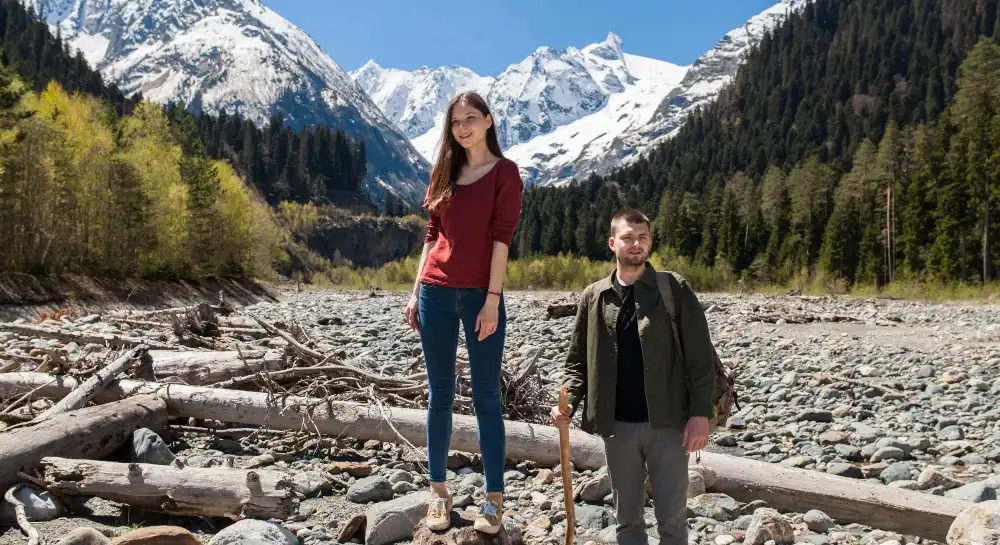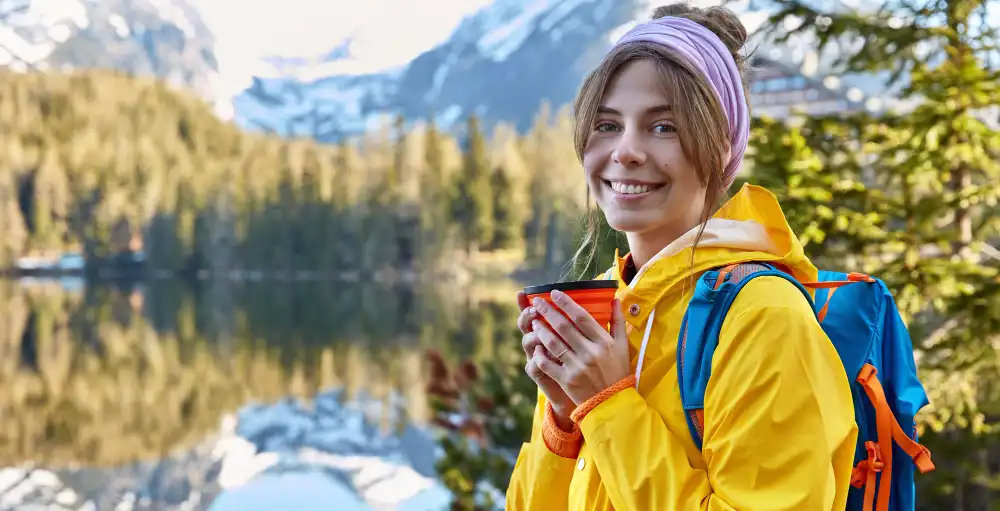Alberta, Canada, is a destination that promises breathtaking landscapes, vibrant cities, and unforgettable adventures. From the majestic Rocky Mountains to the vast prairies and stunning national parks, Alberta is a traveler’s dream. Whether you’re planning a road trip, a winter getaway, or a summer escape, there’s so much to explore. But before you pack your bags, here’s a comprehensive list of things you need to know about traveling to Alberta.
What to Know About Traveling to Alberta:
- Alberta’s Must-See Destinations
- Best Time to Visit Alberta
- Weather and What to Pack
- Getting Around Alberta
- Wildlife Encounters and Safety Tips
- Outdoor Adventures and Activities
- Cultural Experiences and Local Cuisine
- Travel Costs and Budgeting
- Travel Permits and Entry Requirements
- Sustainable Travel in Alberta
1. Alberta’s Must-See Destinations
Banff National Park
Banff is Alberta’s crown jewel, and you can’t miss it. From the famous Lake Louise (a turquoise lake straight out of a postcard) to the stunning Moraine Lake, every corner of Banff is breathtaking. Go hiking, take a gondola up Sulphur Mountain, and soak in the Banff Upper Hot Springs.
Pro Tip: Get to Moraine Lake early in the morning—it gets crowded, and parking is limited. The best way to get there is via shuttle.
Jasper National Park
Jasper feels wilder than Banff, with fewer crowds and an equally stunning landscape. Drive along the Icefields Parkway, visit Maligne Lake, and hike Athabasca Falls. If you’re lucky, you might spot bears, elk, or moose along the way.
Pro Tip: Drive the Icefields Parkway at sunrise—it’s one of the most scenic drives in the world.
Calgary
Calgary is a dynamic city blending urban fun with cowboy culture. If you’re visiting in July, don’t miss the Calgary Stampede, a massive rodeo and festival. Also, check out the Calgary Tower, Heritage Park, and the vibrant 17th Avenue for restaurants and nightlife.
Pro Tip: Calgary is sunny year-round, so pack sunglasses—even in winter!
Edmonton
Edmonton, Alberta’s capital, is famous for the West Edmonton Mall (one of the largest in the world), but it also has an awesome arts scene. Explore Elk Island National Park, which is home to bison and beautiful stargazing spots.
Pro Tip: If you’re here in August, the Edmonton Fringe Festival is one of the best theatre festivals in the world.
Drumheller & The Badlands
For something totally different, head east to Drumheller, where you’ll find hoodoo rock formations and the Royal Tyrrell Museum, home to one of the best dinosaur fossil collections in the world.
Pro Tip: Hike the Horseshoe Canyon for stunning views of Alberta’s Badlands.
Waterton Lakes National Park
A hidden gem near the U.S. border, Waterton combines stunning mountains with deep blue lakes. It’s quieter than Banff but just as beautiful.
Pro Tip: Hike the Bear’s Hump Trail for an epic panoramic view.
2. Best Time to Visit Alberta
Summer (June – August):
- Ideal for hiking, camping, and road-tripping through the Rockies.
- Expect warm days (20-30°C) but cooler nights.
- Peak tourist season—book accommodations in advance.
Fall (September – October):
- Gorgeous golden larch trees in the mountains.
- Fewer tourists, making it a great time for photography and quiet hikes.
- Weather can be unpredictable—layers are key.
Winter (November – March):
- A paradise for skiers and snowboarders (Banff, Jasper, and Lake Louise have world-class slopes).
- Be prepared for extreme cold, sometimes reaching -30°C.
- Best time to see the Northern Lights in northern Alberta.
Spring (April – May):
- Shoulder season with fewer crowds.
- Melting snow makes some hiking trails muddy.
- Great time to see wildlife waking up from hibernation.

3. Weather and What to Pack
Alberta’s weather can be unpredictable, so packing wisely is key:
- Summer: Light layers, sunscreen, a hat, and sturdy hiking shoes.
- Winter: Heavy winter gear, including a warm coat, gloves, a toque (beanie), and waterproof boots.
- Year-Round Essentials: A reusable water bottle, rain jacket, and camera to capture the stunning scenery.
4. Getting Around Alberta
Alberta is a large province, so planning your transportation is essential:
- Car Rentals: Renting a car is the most convenient way to explore Alberta, especially for road trips like the Icefields Parkway.
- Public Transit: Calgary and Edmonton have reliable public transit systems, but rural areas may require a car.
- Flights: Domestic flights are available between major cities like Calgary and Edmonton.
- Buses and Shuttles: Some tour companies offer shuttle services to popular destinations like Banff and Jasper.
5. Wildlife Encounters and Safety Tips
Alberta is home to diverse wildlife, including bears, elk, moose, and bighorn sheep. Here’s how to stay safe:
- Keep Your Distance: Always maintain a safe distance from wildlife (at least 100 meters for bears and 30 meters for other animals).
- Carry Bear Spray: If you’re hiking in bear country, bear spray is a must.
- Store Food Properly: Use bear-proof containers or lockers to store food while camping.
- Stay on Trails: Avoid wandering off marked paths to minimize encounters with wildlife.
6. Outdoor Adventures and Activities
Alberta is an outdoor enthusiast’s paradise. Here are some activities to try:
- Hiking: Explore trails like Johnston Canyon, Plain of Six Glaciers, and Sulphur Mountain.
- Skiing and Snowboarding: Hit the slopes at world-class resorts like Banff Sunshine, Lake Louise, and Marmot Basin.
- Canoeing and Kayaking: Paddle on serene lakes like Maligne Lake or the Bow River.
- Cycling: Ride through scenic routes like the Legacy Trail or the Icefields Parkway.
- Hot Springs: Relax in natural hot springs like Banff Upper Hot Springs or Miette Hot Springs.
7. Cultural Experiences and Local Cuisine
Alberta offers a rich cultural scene and delicious food:
- Indigenous Experiences: Learn about Indigenous culture at sites like Head-Smashed-In Buffalo Jump or through guided tours.
- Festivals: Attend events like the Calgary Stampede, Edmonton Folk Music Festival, or Banff Mountain Film Festival.
- Local Cuisine: Try Alberta beef, bison, poutine, and craft beer from local breweries.
- Farmers’ Markets: Visit markets in Calgary or Edmonton to sample fresh produce and artisanal goods.
8. Travel Costs and Budgeting
Alberta can be both budget-friendly and luxurious, depending on your preferences:
- Accommodation: Options range from hostels and campgrounds to luxury resorts and boutique hotels.
- Dining: You can enjoy affordable meals at diners or splurge on fine dining in cities like Banff and Canmore.
- Activities: Many outdoor activities are free, but attractions like the Columbia Icefield Skywalk or gondola rides may have fees.
- Transportation: Gas prices can vary, so factor in fuel costs if you’re road-tripping.
9. Travel Permits and Entry Requirements
Before traveling to Alberta, ensure you have the necessary documents:
- Passport and Visa: Check if you need a visa to enter Canada.
- Park Passes: Purchase a Parks Canada Discovery Pass for access to national parks.
- Travel Insurance: Consider getting travel insurance, especially for outdoor activities.
10. Sustainable Travel in Alberta
Help preserve Alberta’s natural beauty by traveling responsibly:
- Leave No Trace: Pack out all trash and avoid disturbing wildlife.
- Support Local Businesses: Choose locally-owned accommodations, restaurants, and tour operators.
- Use Public Transit or Carpool: Reduce your carbon footprint by sharing rides or using public transportation.
- Respect Indigenous Lands: Follow guidelines and learn about the history and culture of the land you’re visiting.
Final Thoughts
Traveling to Alberta is an experience like no other. With its stunning landscapes, diverse wildlife, and endless activities, it’s a destination that caters to all types of travelers. By planning ahead and respecting the environment, you can make the most of your trip while preserving Alberta’s natural beauty for future generations.
Whether you’re chasing mountain views, exploring vibrant cities, or immersing yourself in local culture, Alberta has something for everyone. So, what are you waiting for? Start planning your Alberta adventure today!









Comment (0)